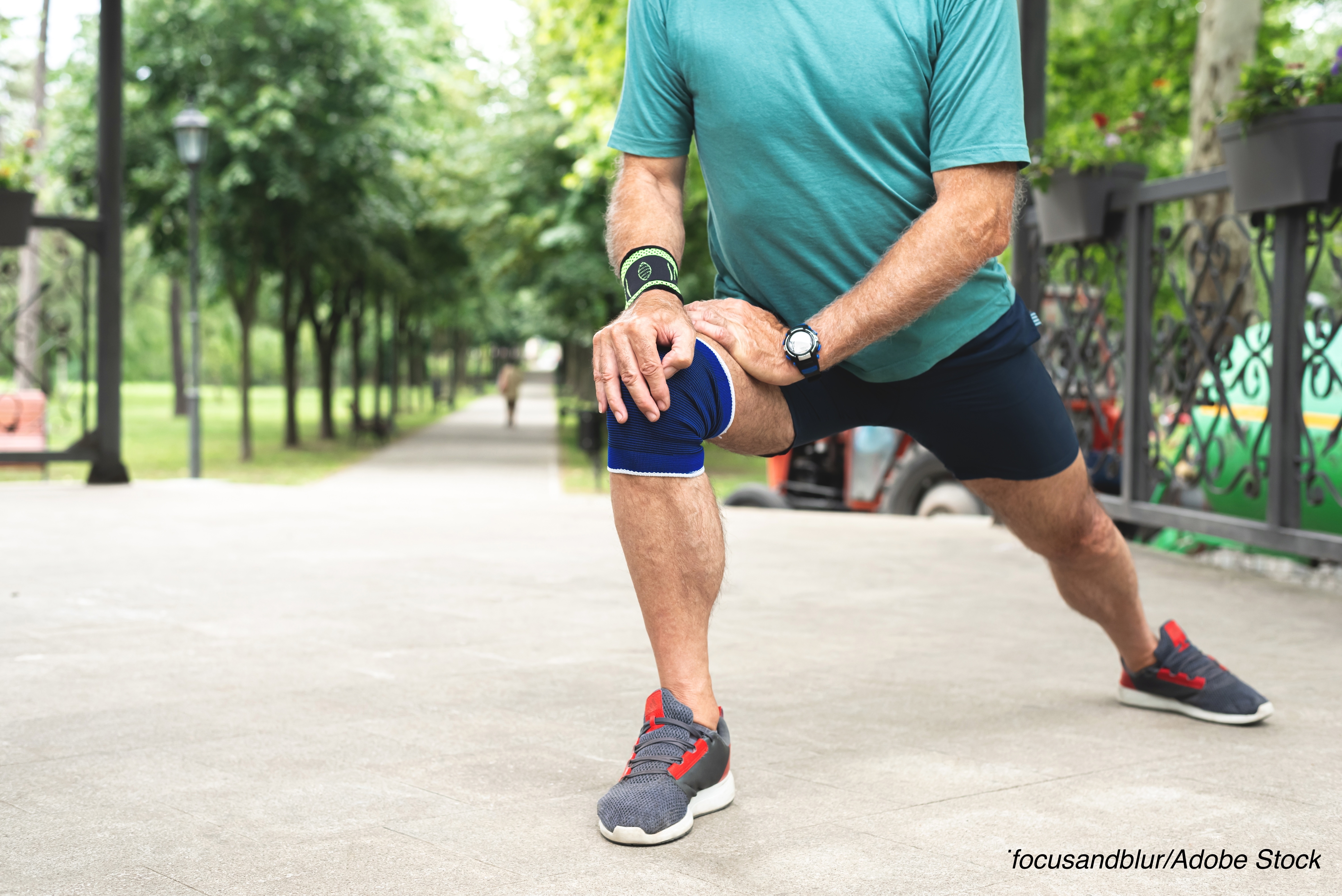
“Clinical guidelines recommend strength training for patients with knee osteoarthritis based on clinical trial evidence of effectiveness. Improved strength mediates pain relief, enhances psychological well-being, maintains cartilage integrity in animal models, and may increase the shock absorbing capability of lower extremity muscles during walking,” wrote senior author Richard F. Loeser, MD, and colleagues.
Although a previous study had suggested that high-intensity strength training done in the short-term was safe and well-tolerated, it may actually be detrimental for patients with knee osteoarthritis due to the increased forces that are exerted on the knee.
For the assessor-blinded, single-center Strength Training for Arthritis Trial (START) trial, Loeser and fellow researchers randomized 377 ambulatory, community-dwelling adults aged 50 years and older (mean age: 65 years; 40% women; approximately 80% White) with a body mass index (BMI) ranging from 20-45 who had knee pain and radiographic evidence of knee osteoarthritis to high-intensity or low-intensity strength training, or a control group.
All participants had mild-to-moderate radiographic medial tibiofemoral arthritis in at least one knee, a neutral or valgus mechanically aligned knee, and no strength training in the past six months. All medications were continued, including NSAIDs.
Strength training sessions were comprised of a five-minute warm-up, 40-minute training session, and 15-minute cool-down three times weekly for 18 months. The training regimen consisted of six lower body exercises and four upper body and core exercises. Participants in the high-intensity group performed three sets of each exercise at increasing capacities, while those in the low-intensity group did three sets as well, at lower capacities.
Researchers assessed knee pain using the Western Ontario McMaster Universities Osteoarthritis Index (WOMAC; 0=best, 20=worst) and knee joint compressive force, which researchers defined as “the maximal tibiofemoral contact force exerted along the long axis of the tibia during walking.”
At six months, the low-intensity group had better results compared with the high-intensity group, with significantly lower WOMAC knee pain (5.6 versus 4.4; adjusted difference: 1.2; 95% CI 0.5-1.9; P=0.001) and better WOMAC function (20.8 versus 16.1; adjusted difference: 4.8; 95% CI 2.4-7.2; P < 0.001).
At this time point, there were no statistically significant differences among the three groups in knee joint compressive forces or six-minute walk distance.
At the 18-month follow-up assessment, after adjusting for sex, baseline BMI, and baseline outcome values, researchers found that WOMAC pain scores did not differ between the high-intensity and the low-intensity groups (5.1 vs 4.4, respectively; adjusted difference: 0.7; 95% CI −0.1 to 1.6; P=0.08) or between the high-intensity and control groups (5.1 vs 4.9; adjusted difference: 0.2; 95% CI −0.6 to 1.1; P=0.61).
Loeser et al also found no statistically significant differences in mean knee joint compressive forces between the high-intensity and low-intensity groups (2,453 vs 2,475 N, respectively; adjusted difference: −21 N; 95% CI −235 to 193; P=0.85), or between the high-intensity and control groups (2,453 vs 2,512 N, respectively; adjusted difference: −58; 95% CI −282 to 165 N; P=0.61).
At 18 months, changes in the 6-minute walk distance were not statistically significantly different among the three groups, similar to results at 6 months. The mean 6-minute walk distance in the high-intensity group was 508 m compared with 514 m in the low-intensity group (adjusted difference: −5 m; 95% CI −29 to 18; P=0.67), and 515 m in the control group (adjusted difference: −6 m; 95% CI −31 to 18; P=0.62).
In the high-intensity group, knee extensor mean strength was significantly greater compared with the control group at 18 months (98.5 vs 88.5 Newton meter [Nm], respectively; 95% CI 3.8-16.2; P=0.002), but not when compared with that in the low-intensity group (93.2 Nm; adjusted difference: 5.3 Nm; 95% CI −0.8 to 11.4; P=0.09).
Finally, at 18 months, Loeser and fellow researchers found that mean knee flexor strength was significantly greater in both exercise groups compared with the control group (51.5 Nm in the high-intensity group and 52.6 Nm in the low-intensity group, vs 43.8 Nm in the control group).
In all, 87 nonserious adverse events occurred, with 53 in patients in the high-intensity group, compared with 30 in the low-intensity group and 4 in the control group.
“One potential explanation for why the outcomes in the high-intensity strength training and control groups were not significantly different relates to the improvement in pain in the control group. In this trial, knee osteoarthritis pain improved by 33% in the control group, compared with increasing from 1% to 17% in prior trials,” wrote Loeser and colleagues.
“Among participants with knee osteoarthritis, high-intensity strength training compared with low-intensity strength training or an attention control did not significantly reduce WOMAC knee pain or knee joint compressive forces at 18 months. The findings do not support the use of high-intensity strength training over low-intensity strength training or an attention control in adults with knee osteoarthritis,” they concluded.
Study limitations include the lack of generalizability of the results, the use of a specific range of frontal plane knee angles, and the use of modeling to estimate knee joint compressive forces.
-
In patients with knee osteoarthritis, high-intensity strength training compared with low-intensity strength training or an attention control did not significantly reduce knee pain or knee joint compressive forces at 18 months.
-
The findings of the START study do not support the use of high-intensity strength training over low-intensity strength training or an attention control in adults with knee osteoarthritis.
Liz Meszaros, Contributing Writer, BreakingMED™
This study was supported by the National Institute of Arthritis and Musculoskeletal and Skin Diseases and the National Institute on Aging.
Loeser reported receiving grants from the National Institute of Arthritis and Musculoskeletal and Skin Diseases and Bioventus and personal fees from Unity Biotechnology.
Cat ID: 438
Topic ID: 437,438,408,494,438,730,255,158,68,925

